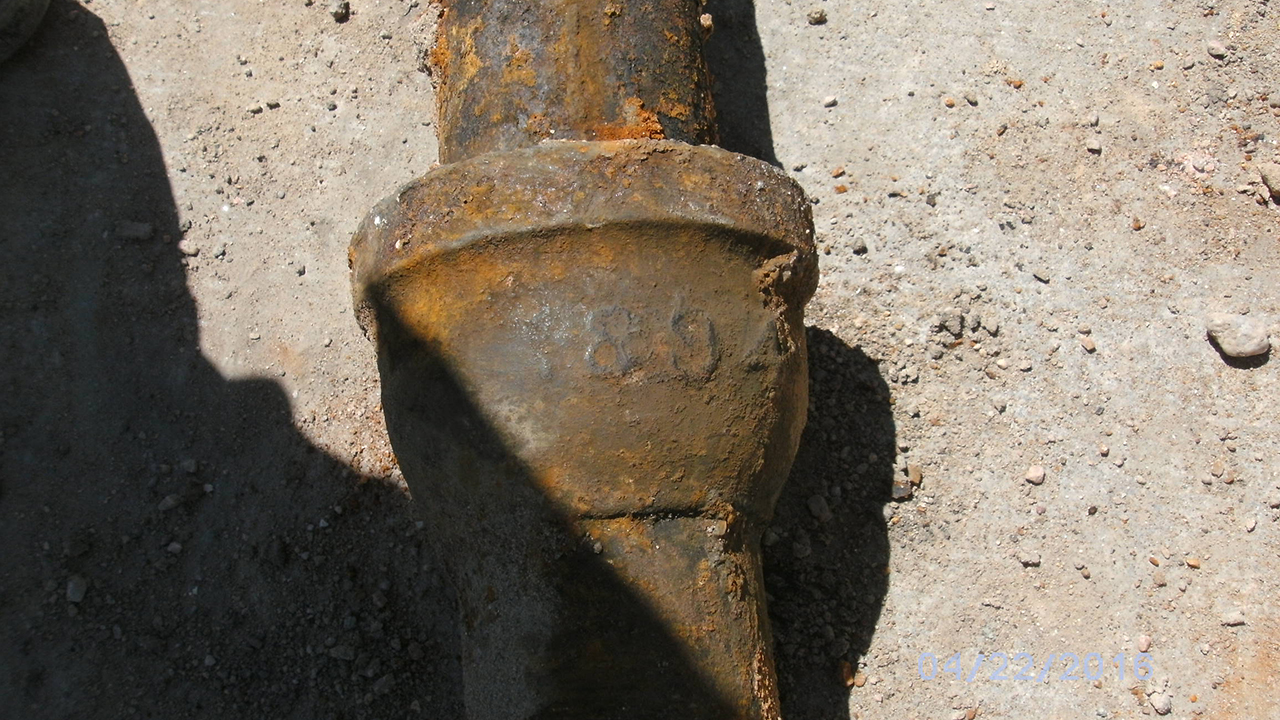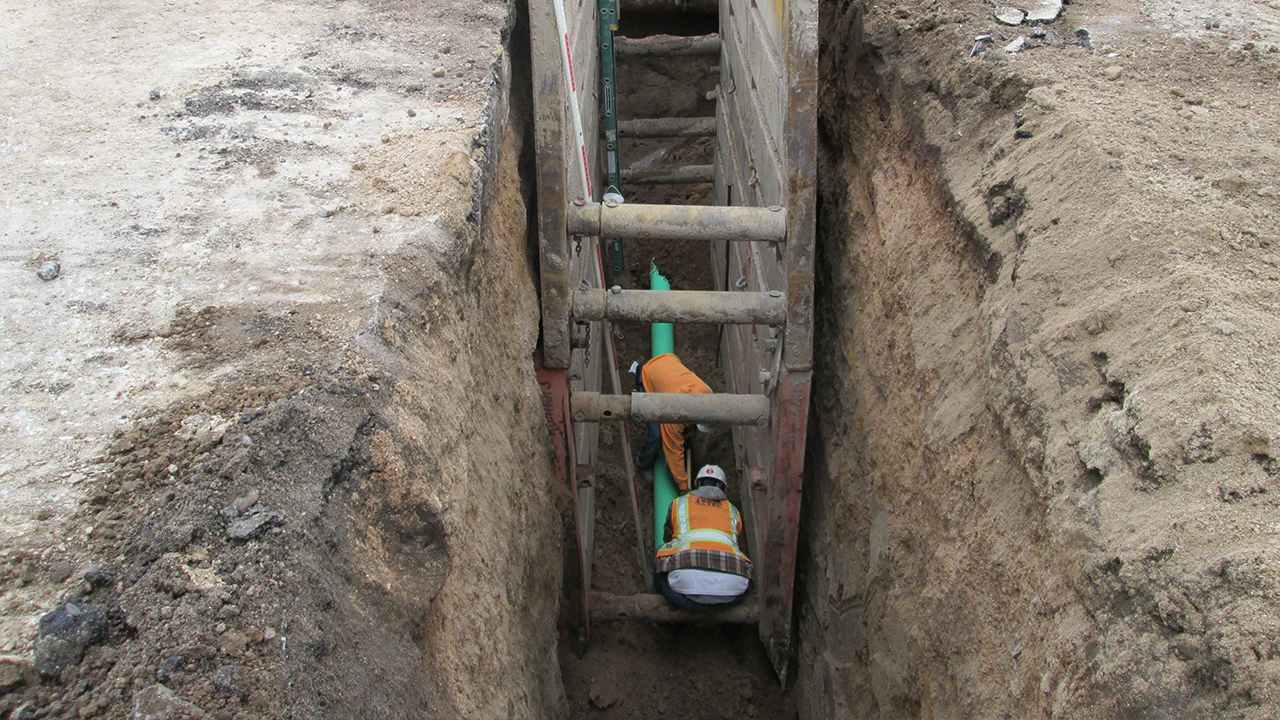Issues arise when it’s time to upgrade aging infrastructure.
Like any city experiencing a resurgence of downtown living and economic growth, the demand on infrastructure grows as well. Who’s impacted when it’s time to make upgrades? Citizens, business owners and government agencies are all affected. Here’s three tips for creating the most value when upgrading aging infrastructure.
1. Be prepared to know the unknown
Replacing aging infrastructure isn’t always complicated, but it requires investigation. You need to know where the existing infrastructure is and how you can connect it with the new project. Institutional knowledge helps with the investigation. Knowing the city processes, systems, details, standards, folklore, cultural values and general information that makes up your community is important. But, sometimes that knowledge can be hard to find. Over time, blueprints and maps disappear, and paperwork can get thrown away. People retire or move on to other opportunities. With smaller communities, it can be even tougher.
Institutional knowledge may only lie with one or two individuals, and even then, only in their heads.
When embarking on a road rehabilitation project in the City of Cheyenne, Wyoming, SEH civil engineer Scott Jardine encountered that very challenge. The City had very little background information on the infrastructure beneath the roadway. The original goal of the 19th Street Rebatilitation project was to improve Cheyenne’s drainage conveyance and reduce flooding impacts. Solutions included replacement and new storm sewer lines, but also offered an opportunity to upgrade outdated water and sewer mains along with roadway replacement along 16 blocks of a well-traveled corridor. What they didn’t know was the condition or make-up of Cheyenne’s buried infrastructure. With investigation, the team learned the existing pipes were old enough to not have reliable plans. The project team conducted a new field survey to determine the type and location of the infrastructure, thus creating a blueprint to guide their work.

When you’re literally digging up history, you have to be prepared for anything, including old infrastructure that has not seen the light of day since the Wild West era.
“One unique thing we found when we went under construction for 19th Street, was the cast iron pipes had date stamps on them from 1894,” says Jardine. “You can see how old the infrastructure was and how much it needed to be replaced."
Jardine says to factor investigation costs into the project if you're uncertain of your city's infrastructure, that way, you will save in the long run. When you run into unknowns during a project they can be difficult to assess and may end up costing more overall. It's best to know what you're working with at the outset.
2. Be flexible and “flow with the design”

Whether working with the unknown, or planning on executing a basic upgrade to existing infrastructure, prepare to be flexible.
“Unknown infrastructure conditions played a huge factor in the Cheyenne project in terms of design solutions,” Jardine says. “We had to work fast and come up with alternative solutions on the fly. Pardon the pun, but even for a storm sewer project, we really had to flow with the design.”
The 19th Street project included not only 120-year-old cast iron pipes but clay pipes as well. Some communities still have wood pipes in service. This meant the team had to be flexible in how they handled the upgrade as it was not a one-size-fits-all solution. After the discovery, the project team had to ensure the proper tools were on hand for contractors to deal with different pipe materials. This is critical to the timing of a project. Downtime is costly, not only for the City and construction contractors but for local business and traffic.
Flexibility matters when the project gets underway as well. Special or unique plans may also need to be crafted on the fly, depending on what is found during or after the field surveys.
The City of Cheyenne project dealt with a wide range of techniques and materials for utility piping. Flexibility in solutions was key as both dig and replace and cured-in-place rehabilitation techniques were used along different sections of the road. In addition, certain sections of 19th Street had minimal cover and very shallow depth for the new infrastructure, thus special elliptical pipes were used. These unique pipes required a depth of only 12 inches below the surface. Meanwhile, under the railroad tracks, excavations and new infrastructure was installed at depths of 24 feet.
When they’re digging up roadways for upgrades, some cities will opt for some additional work to prepare them for future projects.
3. Look to the future
Jardine recommends thinking ahead and having a vision for the future. Why? It can save you money, time and inconvenience.
“The biggest question cities face when embarking on infrastructure reconstruction projects,” Jardine says, “Is what can be done now that might need to be done in five to 10 years?"
Cities should look to the future and ask the right questions. Do you need a new water line? If yes, would you want an excavation down your newly paved roadway? What will my residents want? It’s easier to do these improvement projects when roadways are already under construction.
Adding on to a project’s original plan is something cities should seriously consider, according to Jardine. Spending the extra money now can save dollars down the line, when additional improvements may be required. Field remedies can be costly, but with the right expectations, all parties can be happy with the end result.
The original goal of the Cheyenne 19th Street project was to repair 16 blocks of storm sewers in a single phase, but ultimately grew to three phases and included a revamp of 20 blocks of storm sewers, sanitary sewers, watermain, roadways, ADA curb ramps and signal improvements.
“It’s just really neat to see the improvements through downtown, I think it really makes the downtown look better,” said Jardine.
The remedy for losing institutional knowledge
When expertise goes out the door, GIS can help replace knowledge with technology
Facing limited staff, budgets and potential loss of institutional knowledge, many organizations are taking advantage of GIS (Geographic Information Services) to get the results they need. From converting paper records to electronic to implementing a robust asset management system to analyzing complex data, GIS technology can help your organization capture and retain institutional knowledge.
With GIS, your city can:
- Organize, update and disseminate your data
- Increase efficiencies and streamline internal operations
- Improve response times and service delivery to your customers and community
- GIS delivers precise, accessible and actionable information to cities.
Bringing it all together
Your city is destined for great things. With the right plan for aging infrastructure, you can get there. It is important to be aware of the unknown and the challenges that might surface. But with flexibility and an eye toward the future, your city can handle aging infrastructure efficiently and economically.
About the Expert

Scott Jardine, PE, is committed to partnering with clients to renew, replace and manage the infrastructure assets that help communities thrive and keep the world in business.

.png?width=113&name=SEH_Logo_RGB%20(1).png)
